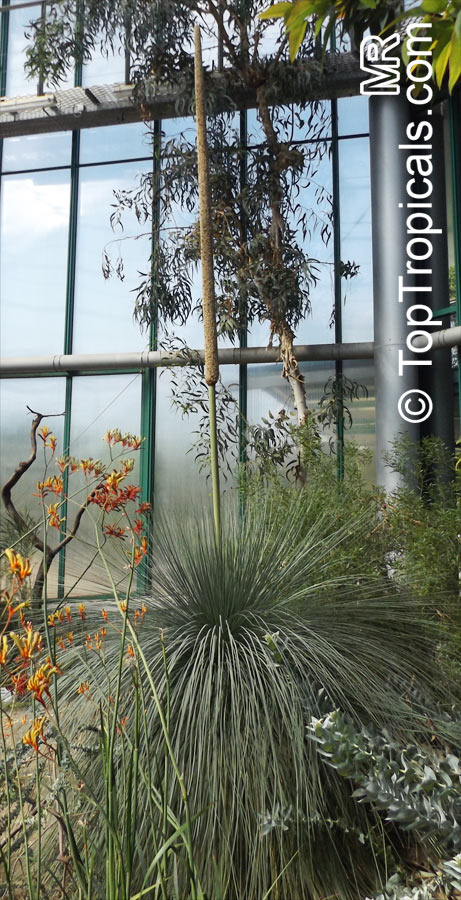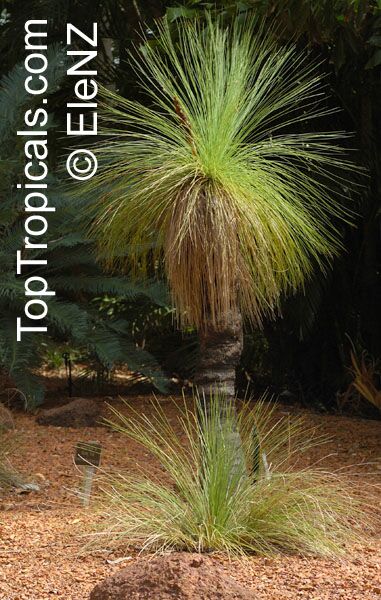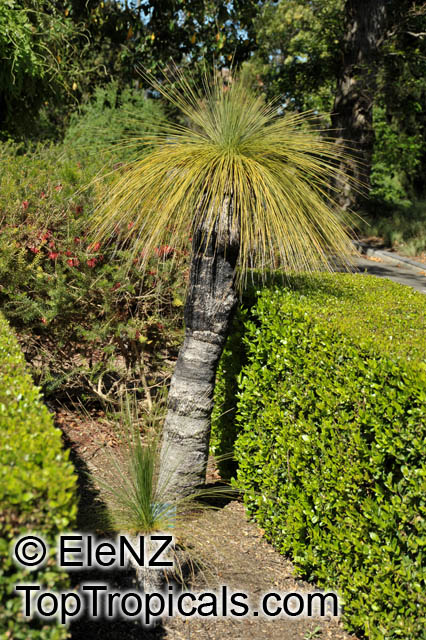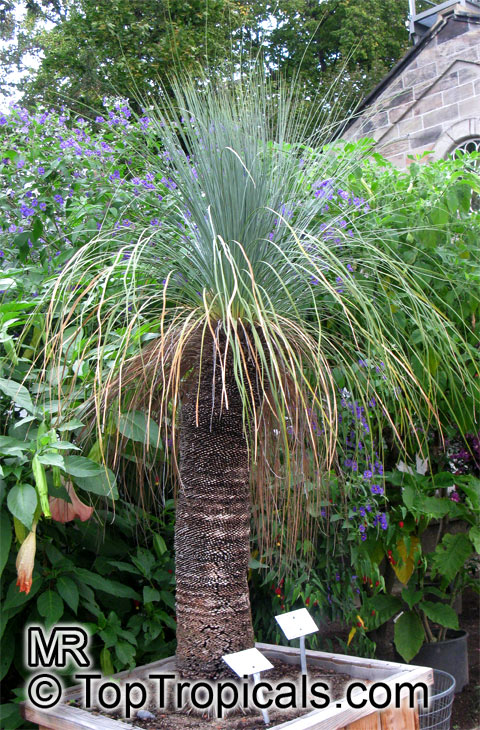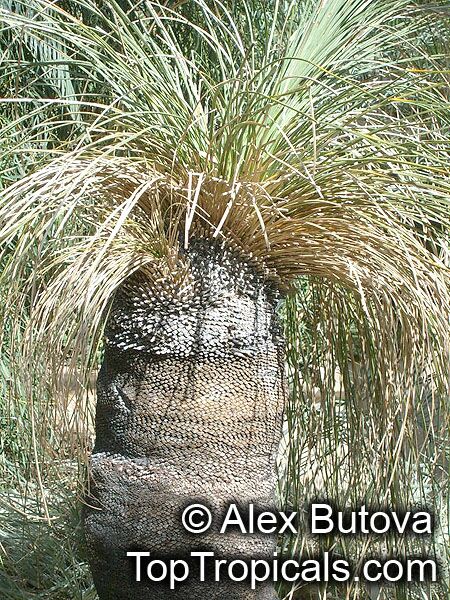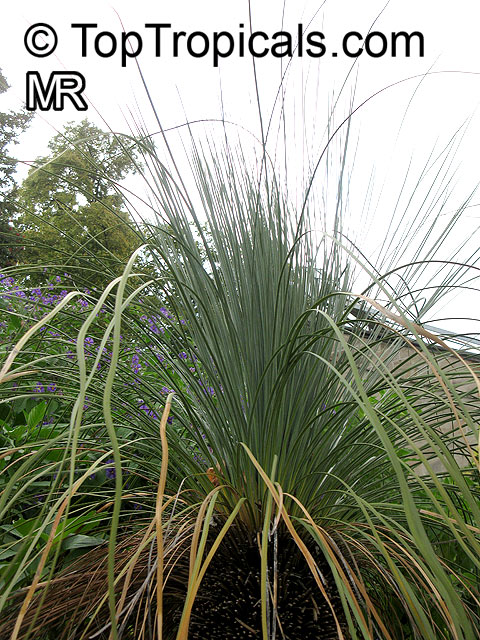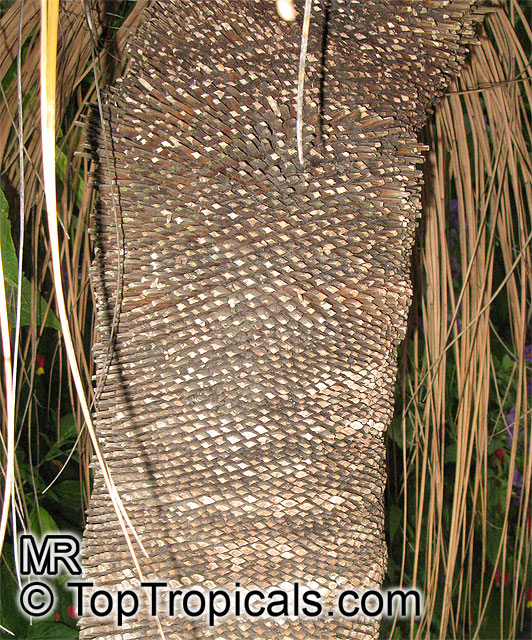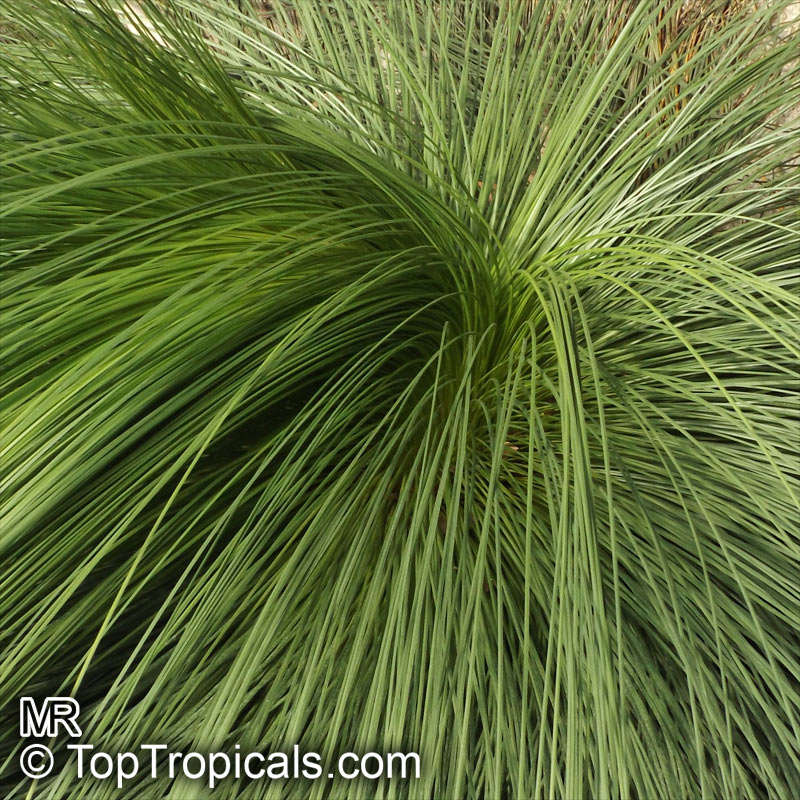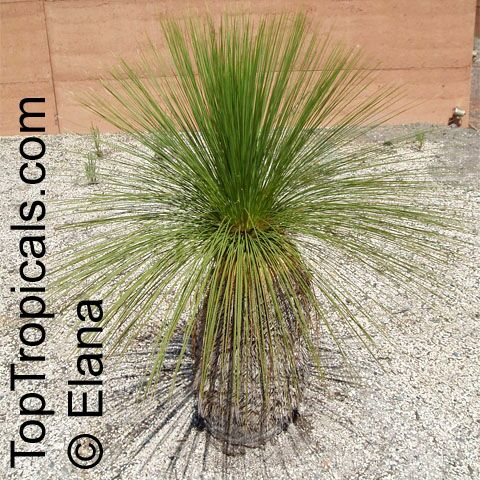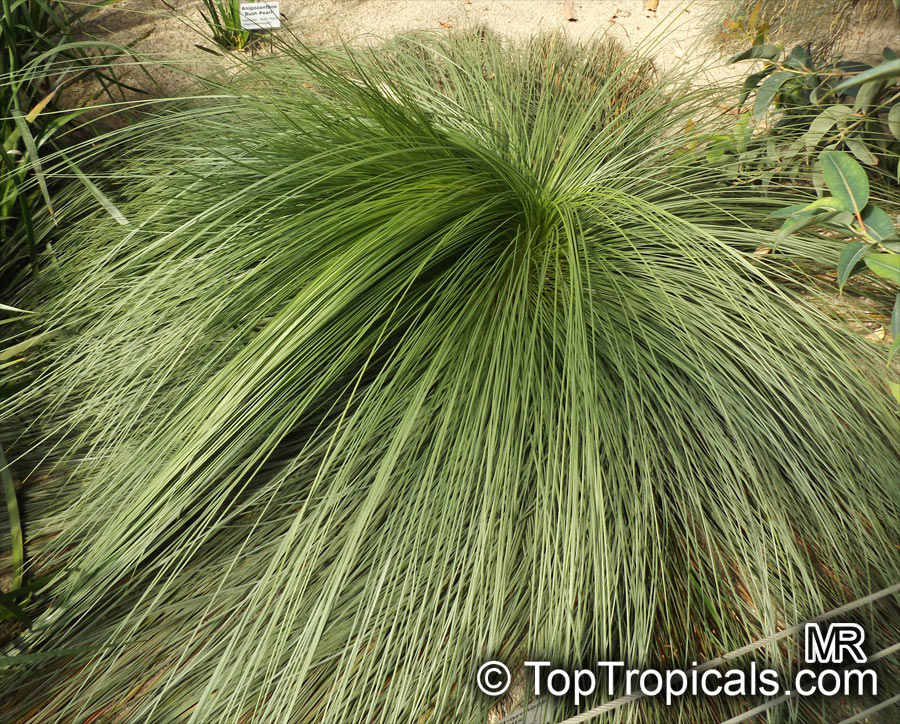Xanthorrhoea sp. (Grass Tree)
Top Tropicals Plant Encyclopedia
Botanical name: Xanthorrhoea sp.
Common name: Grass Tree
Family: Xanthorrhoeaceae
Origin: Australia





Xanthorrhoea, also known as Grass Trees or Balga Grass to Australian aborigines, are slow-growing, long-lived plants that prefer full sun and moderate water. They can survive long dry periods and are cold hardy to at least 30°F, making them suitable for USDA Zones 9-11. They can grow up to 5-10 feet tall and have brilliant green foliage that is ornamental and can be used for hedges or in courtyards and rock gardens. When grown in a pot, extra care must be taken in cold climates and the plant should be moved to a sheltered area and covered during harsh winters. During the growing season, water regularly and feed with a soluble fertilizer every other week, and prune old or dead leaves as needed.
The name Balga Grass, meaning black boy, was given by the Australian aborigines due to the singed black trunk and long green leaves resembling black figures after a wild fire. Xanthorrhoea have been known to live up to 600 years and have a history of usage by both the aboriginal people and Europeans. The glassy resin exuded from the trunks was used in varnish and other products, while the flowering spikes were soaked in water to make a sweet drink and the soft base of young leaves were eaten. The tough leaves were also used as knives.
